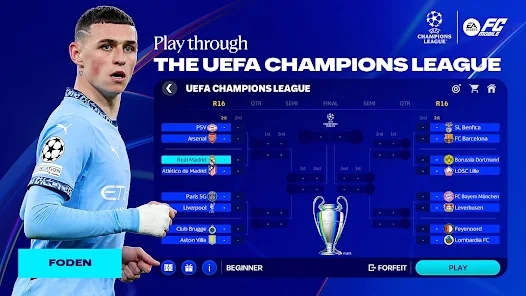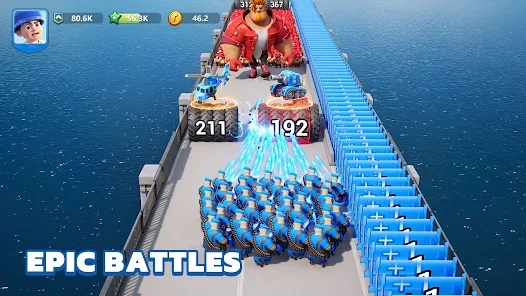Why Casual Games are the New Frontier in Educational Gaming: Bridging Fun and Learning
The Rise of Casual Games
Casual games have rapidly soared in popularity over the past few years. Unlike traditional games that require hours of dedication, casual games are designed for short bursts of play. This immediacy makes them perfect for everyone from the busy professional to the stay-at-home parent. It’s no wonder that they have caught the attention of educators looking to incorporate games into learning environments.
What are Educational Games?
Educational games leverage gaming mechanics to create engaging learning experiences. They might range from simple quizzes to complex simulations. The goal is to make learning enjoyable while ensuring the educational content is not lost in the game mechanics.
Bridging Fun and Learning
Casual games excel at merging fun with learning, making them an ideal choice for educational purposes. They offer interactive environments where players can learn at their own pace. This could be anything from basic math drills to historical simulations.
Why Choose Casual Games for Education?
- Accessibility: Casual games are usually easy to pick up, making them accessible to a wide audience.
- Engagement: Their entertaining nature keeps students interested, reducing common barriers to learning.
- Flexibility: They can fit into various learning contexts, catering to different educational goals.
The Gamification Effect
Gamification refers to the application of game-like elements in non-game contexts. In educational settings, this could mean incorporating rewards, challenges, and leaderboards. Casual games naturally embody these elements, allowing learners to engage in healthy competition while basking in the joy of overcoming challenges.
Examples of Successful Casual Educational Games
| Game Title | Description | Learning Objective |
|---|---|---|
| ABCmouse | Aimed at preschoolers, this platform offers a variety of games focusing on reading and math. | Early literacy and numeracy skills. |
| Duolingo | Language-learning app that incorporates playful elements while teaching various languages. | Language acquisition. |
| Kahoot! | Players answer quiz questions in real time, ideal for classroom settings. | General knowledge and review. |
Understanding the Audience
It's essential to consider the audience when implementing casual games for educational purposes. Whether the target demographic is younger children or adult learners, tailoring the content and gameplay mechanics to their interests is crucial for success.
The Role of Technology
Advancements in technology have played a significant role in the growth of casual games. Mobile devices provide easy access to games, allowing learners to engage wherever they are. Moreover, the rise of the internet has fostered communities where players can share experiences and strategies, enhancing the learning experience.
Potential Challenges
Despite their many advantages, it’s worth noting some challenges. Not all games perfectly encapsulate educational content, leading to potential misconceptions. Additionally, there's a concern about screen time and its effects on younger learners. Finding a balance becomes the educator's responsibility.
EA Sports FC 24: Bridging Gaming with Sports Education
Sports games like EA Sports FC 24 epitomize how casual gaming can blend entertainment with educational elements. Players can learn about teamwork, strategy, and even sportsmanship while enjoying the game. Organizations are starting to integrate these experiences into sports programs, showcasing the broader possibilities of casual gaming in education.
The Impact of Casual RPGs: TMNT RPG Game
Take the TMNT RPG game, for example. This game blends action with storytelling and character development. It teaches players about teamwork as they navigate challenges together. By engaging with familiar characters and narratives, educational concepts can be explored without the players even realizing they are learning.
Future Trends in Educational Gaming
As both the gaming and educational landscapes evolve, we can expect to see more integration between casual games and formal education. Think about augmented reality (AR) or virtual reality (VR) experiences that allow for interactive learning. This shift will undoubtedly bring forth exciting opportunities to engage learners creatively.
Key Takeaways
- **Casual games offer a unique blend of fun and education, making them ideal for learning environments.***
- **Their accessibility and engagement factor attract a diverse range of learners.***
- **Technological advancements continue to support the evolution of casual games in education.***
- **While challenges exist, the benefits of integrating educational games into learning outweigh the drawbacks.***
The Conclusion
Casual games represent a growing frontier in educational gaming, providing a pathway that bridges enjoyment and learning. As educators, it's vital to recognize the potential of these games and thoughtfully incorporate them into curricula. By doing so, we create enriched learning environments that stimulate creativity and foster a love for knowledge among students. The future of education may very well be a playful one, and that is something worth investing in.



